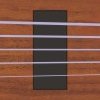Bonjour,
je me demandais si le tilleul est appeler "basswood" en anglais parce qu'il transmettait bien les basses.
Merci
question tilleul
Modérateur : FAQueurs
- Merry McField
- Se lève la nuit pour poster
- Messages : 964
- Enregistré le : dim. 23 oct. 2005 05:30
- Nombre de guitares fabriquées : 0
- Localisation : saint-polycarpe(quebec)
question tilleul
ooooo0000000OOOOOOOO
OO000000ooooooooooOOOOOOO
0ooooooOOOOOooOoOo
0000oooooOOOOoooOOooOOoOo
oOoooooooOOOOOOO
Récipiendaire d'un 5th string d'argent massif 16 mars 2007
OO000000ooooooooooOOOOOOO
0ooooooOOOOOooOoOo
0000oooooOOOOoooOOooOOoOo
oOoooooooOOOOOOO
Récipiendaire d'un 5th string d'argent massif 16 mars 2007
- DolganoFF
- Mais tais-toi !!!
- Messages : 3540
- Enregistré le : sam. 25 sept. 2004 15:19
- Nombre de guitares fabriquées : 0
- Localisation : 78
Basswood was originally
"bastwood" and bast, like "baste", came from an ancient word meaning
"to sew " . So there you are !
Basswood was a major source of fiber for prehistoric peoples and many
tribes of American Indians. Women gathered long strips of bark from
sprouts and saplings, peeled off the outer bark with their teeth and
used the inner bark or bast. Usually it was soaked in water for two or
more weeks and this "retting" process could be hurried by pounding
the bast or by simmering it in vessels with wood ashes added to the
water. The long soft fibers were twisted into cords and ropes for
innumerable purposes: bags and mats; fishing lines and nets; sewing
garments and the edges of cattail mats; sewing birch bark together to
make canoes or containers such as those for storing maple syrup and
sugar; tying the pole framework for wigwams and lodges; fastening on
the mats of bark or skins or cattails to cover such shelters; etc.
- Merry McField
- Se lève la nuit pour poster
- Messages : 964
- Enregistré le : dim. 23 oct. 2005 05:30
- Nombre de guitares fabriquées : 0
- Localisation : saint-polycarpe(quebec)

